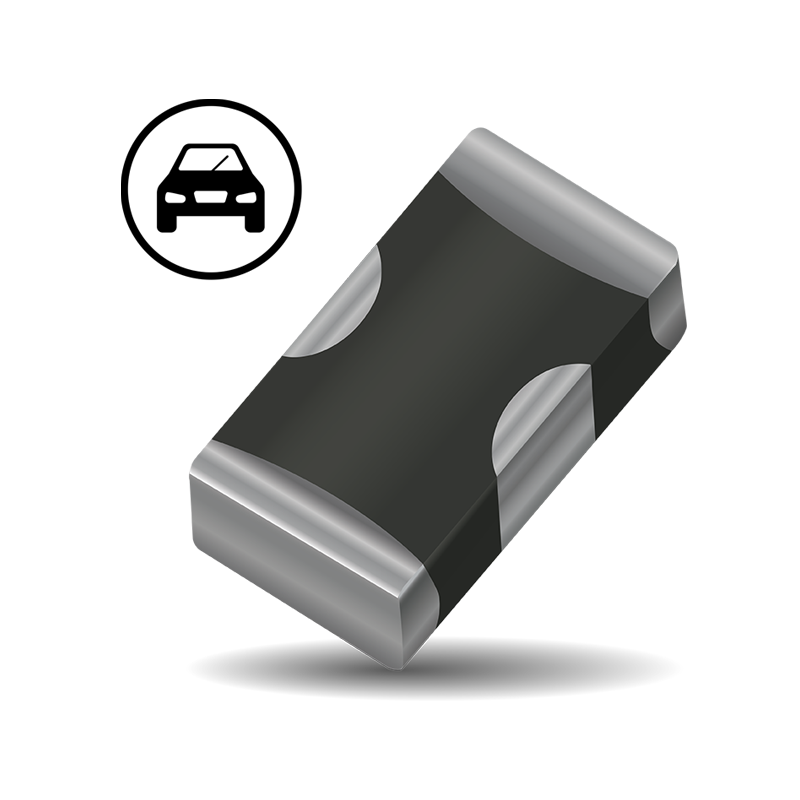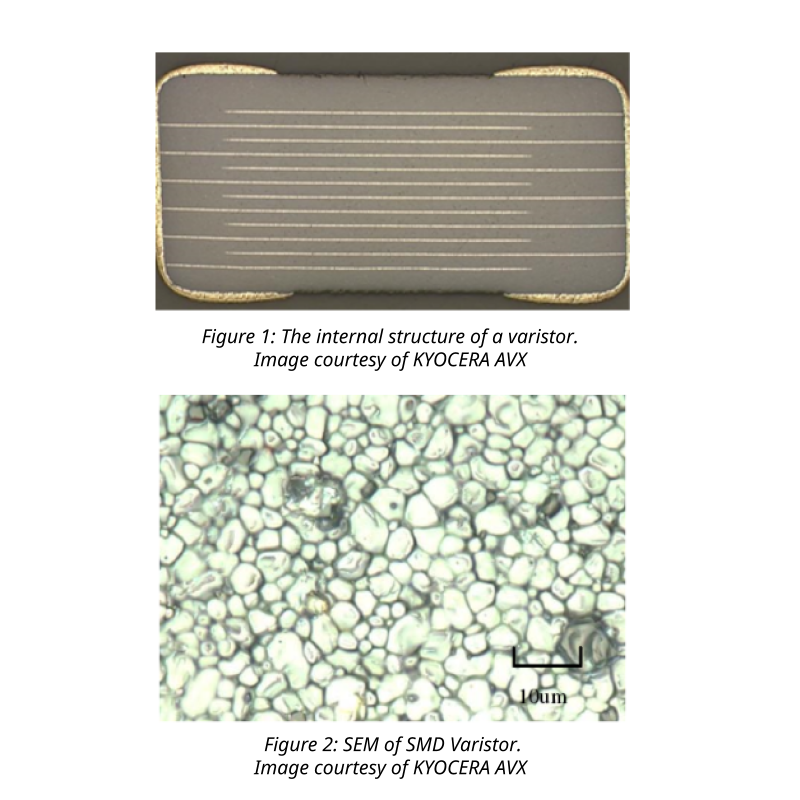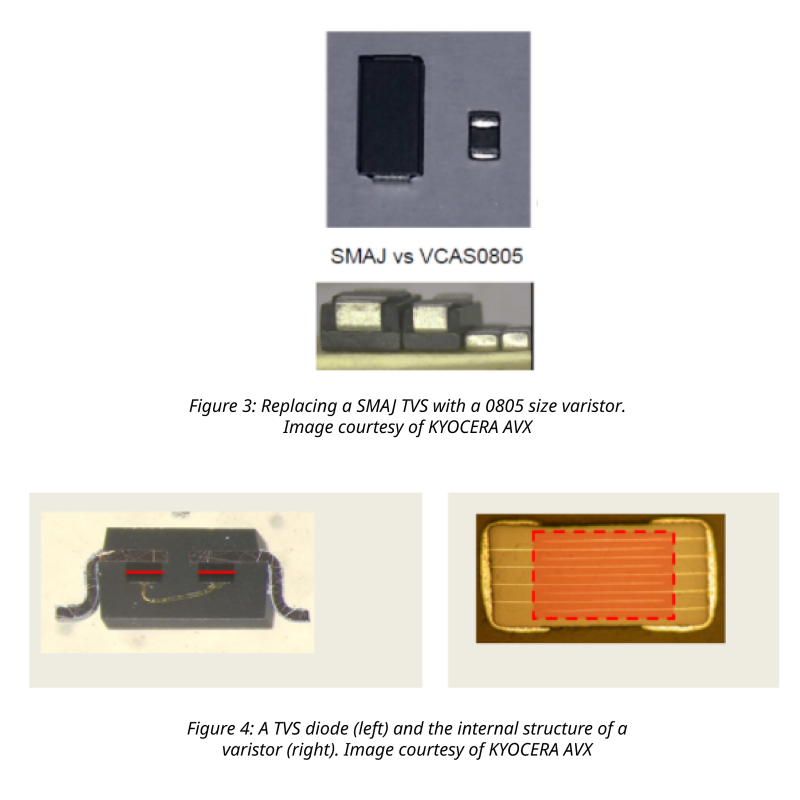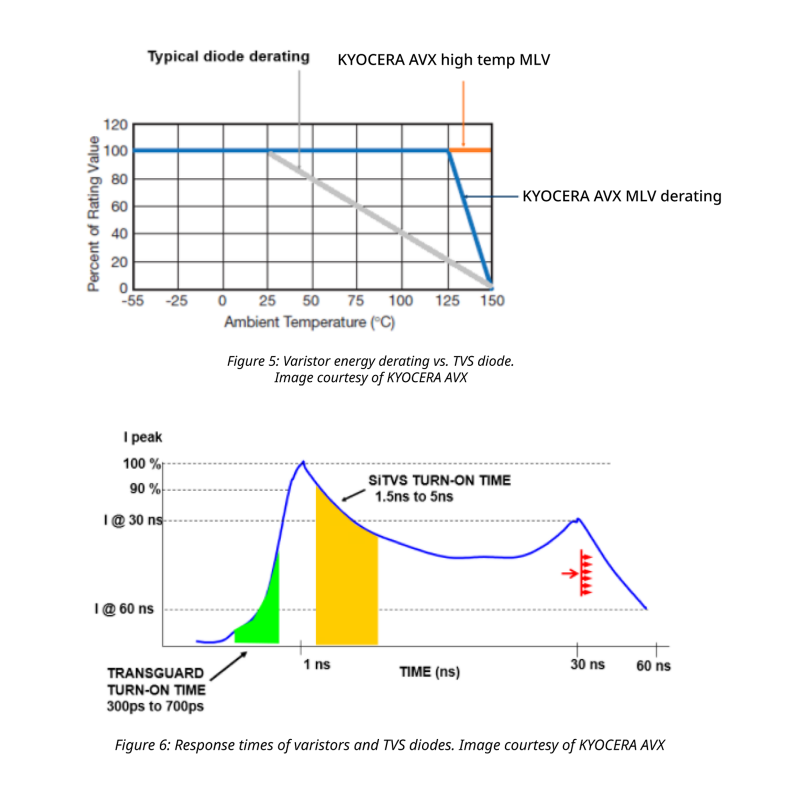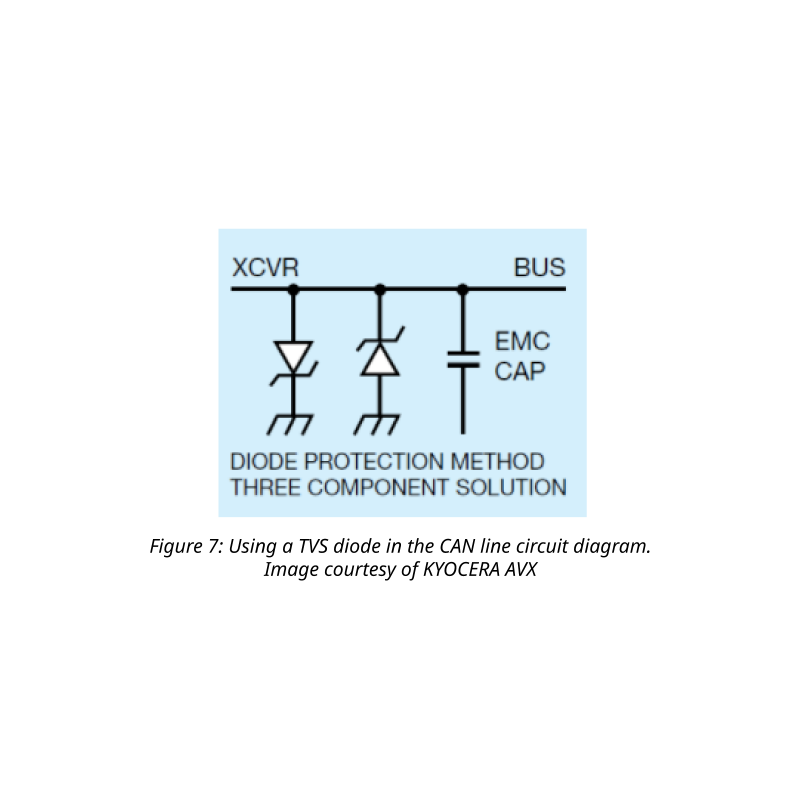Advantages of Varistors and Their Applications in the Automotive Field
Multilayer chip varistors (MLVs) are resistive elements comprising zinc oxide (Zn0) as the main component. In recent decades, they are being used for protection against surge voltage, noise, and transient voltages.
Unlike conventional varistors, the maximum peak current and non-linear coefficients are large, and the resistance is very high below a threshold voltage, hardly allowing current to flow. However, when the voltage exceeds the threshold, the resistance drops abruptly and allows a large current to flow. Such properties make MLVs ideal as protective elements in a host of electrical and electronic applications, including automobiles.
The Growing Need for Circuit Protection in Electronic Applications
With the rapid miniaturization and multi-functionalisation of electronic products, the integration and speed of circuits have dramatically increased.
Surface mount technology (SMT) is also widely popularised within the electronics manufacturing industry. However, although the sensitivity of circuits is continuously improving, the impact of electrical pulses on semiconductor chips within circuits through conduction and induction can be potentially more catastrophic, and PCBs are increasingly fragile.
Electromagnetic noise, surge currents, and electrostatic discharge (ESD) due to human body contact can cause machine malfunction or damage semiconductor components. Integrating circuit protection elements is also challenging due to space constraints.
Multilayer Varistors vs. TVS Diodes: Understanding the Difference
MLVs offer several benefits over transient voltage suppression (TVS) diodes. Firstly, the sizes of TVS diodes are relatively large, making them challenging to integrate into space-constrained applications. Moreover, their response times are typically slower than varistors, and they have low energy tolerance. Thus, TVS diodes may not meet evolving requirements for ESD protection in today’s fast-paced automotive applications. Today, MLVs are gradually replacing TVS diodes in a wide range of automotive PCBs.
A multilayer chip varistor is a type of varistor based on zinc oxide ceramic material, designed using special manufacturing techniques. They are high-performance protection components that leverage the non-linear characteristics of the material.
When a surge voltage is present between the two poles of the varistor, it clamps the voltage to a safe fixed voltage value, thereby realizing the protection of the subsequent circuit. Compared to TVS diodes, multilayer varistors have the following advantages:
Smaller Footprints
Figure 3 shows that replacing a SMAJ TVS diode with a 0805 size varistor for ESD or surge voltage protection can greatly increase board space savings.
As shown in figure 4, a small MLV can replace a much larger TVS. While observing the internal structure of each component, it is shown that although the size of TVS is very large, the effective area that resists ESD or prevents surge voltages is an internal P-N junction making up only about 5% of the total size. On the other hand, the varistor has a multilayer structure, with the effective working area being where the inner electrodes face each other. This area accounts for 70-80% of the total size of the varistor.
Temperature Stability
Another significant advantage of varistors over TVS diodes is temperature stability (no derating over operating temperature). As shown in figure 5, the effective energy of TVS diodes will decrease rapidly as the temperature of the working environment increases. For example, consider a TVS diode having an effective power of 1000 W at room temperature. When the working temperature rises to 100°C, its effective power is only 400 W. Similarly, the effective power is only 200 watts at 125°C. This temperature characteristic of TVS diodes limits their usage in high-temperature applications, such as automobiles. On the other hand, as long as the temperature does not exceed 125°C, the effective energy of a varistor remains unchanged.
Response Times
Whether varistors or TVS diodes are being used for ESD protection in circuits, the response time is an essential parameter. The speed of response time directly affects the effect of ESD protection. As shown in figure 6, the response time of a varistor is about 300 to 700 ps, while the response time of a TVS diode is about 1.5 to 5 ns. A varistor’s response time is faster than a TVS diode because a multilayer chip varistor is completely surface mounted, having no leads and external packaging, so parasitic inductance generated is almost zero. TVS diodes contain a certain length of lead, producing a specific parasitic inductance that slows its response time.
Recall that static electricity is a kind of pulse with high energy but a short duration. Generally, the time required from the generation of static electricity to the peak of the static energy is about 1 ns; thus, using a TVS for electrostatic protection would be inefficient as the TVS diode will respond after the pulse has reached its peak value. However, using a varistor for ESD protection achieves more reliable protection due to its shorter response time at less than 1 ns. Consequently, the varistor can suppress transient overvoltage before it peaks and minimize damage caused by static electricity to the circuit.
Automotive Applications of Multilayer Varistors
Multilayer chip varistors are widely used in IC protection, CMOS, MOSFET device protection, I/O line protection, and automotive electronic circuit protection due to their smaller size, faster response times, large current capacity, and excellent temperature characteristics.
The use of varistors in several automotive circuits has proven to be more favorable than using TVS diodes. For instance, in a car's spark plug circuit, the ambient temperature often exceeds 120°C during normal operation. Using a TVS diode for ESD protection, in this case, will attenuate the effective power severely. However, using a varistor would be ideal here due to its excellent temperature stability. At a much smaller footprint, multilayer varistors are also suitable for use in automobile lamp circuits to save board space. TVS diodes are also suitable for ESD protection in the design of CAN lines in automobiles.
In many cases, design schemes feature TVS diodes and capacitors in parallel. As shown in figure 7, the reason for this is that the capacitance of the TVS is very low, and a low capacitance is often used in parallel for EMC filtering. Since the varistor itself has a certain capacitance value, a varistor can replace the TVS diode and MLCC in the design of the CAN line, saving cost and space.
Conclusion
This whitepaper compared and analysed the microstructure characteristics of chip varistors and TVS diodes.
Using varistors for ESD or surge protection was found to have greater advantages in circuits in several automotive applications. It is precisely because of chip varistors with a small footprint, excellent temperature stability, and faster response times that these are widely used in automotive applications today. With the miniaturization of automotive electronics and the shrinking of PCBs, the replacement of TVS by multilayer varistors could become an unstoppable trend in the future.

